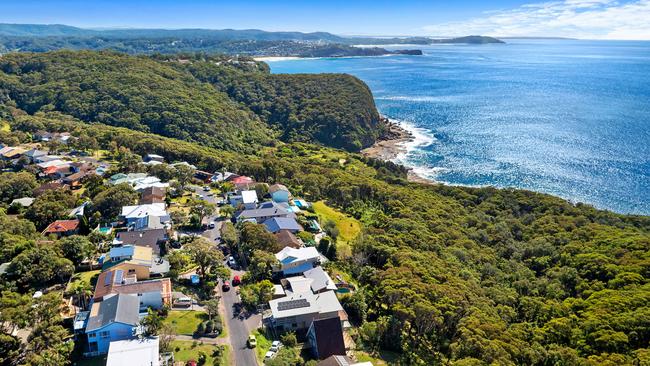What your home will be worth in 2028: every NSW suburb revealed
Home prices in parts of Sydney are on track to double in as little as five years, with $1m unit prices and $2m house prices set to be the new norm, exclusive modelling has revealed.
Property
Don't miss out on the headlines from Property. Followed categories will be added to My News.
Million dollar unit prices and $2m house prices have been tipped to become the norm in Sydney by 2028, with home buyers in some suburbs expected to pay double current prices.
Exclusive PropTrack modelling has revealed Greater Sydney’s typical unit value would climb 33 per cent over the next five years if prices grew at the same average annual rate as the last decade.
Average house value increases would be even larger at 54 per cent over the five years, requiring buyers to fork up millions more than they’re currently paying in some areas.
Many of the biggest rises would be in coastal areas popular with remote workers – locations where there is often little scope for developers to add new housing.
PropTrack economist Paul Ryan said the Sydney market was primed for more growth, despite already expensive prices and rising interest rates, because new housing wasn’t getting built fast enough to meet surging demand.

There was also tremendous existing wealth in the housing market due to previous market booms, which meant some homeowners were sitting on big stockpiles of equity they could use to bid up prices on their next home purchase.
“These buyers wouldn’t be as affected by interest rate rises because they don’t need to take out big loans,” Mr Ryan said, noting some of the most active buyers in the current market were only borrowing 50 per cent of the value of their properties.
The PropTrack research examined what dwelling prices will be in five years’ time if market growth trends from the last decade were repeated – a period that saw a mix of market ups and downs.
Mr Ryan said the modelling did not represent an exact forecast for the housing market since past performance was not a definitive indicator of future price rises, but many forces that drove prices higher over the last decade remain in place.
“We are clearly not building enough housing to meet demand and market conditions are making it difficult for developers to get the rate of new building up,” he said.
Greater Sydney’s median house price was expected to grow from the current $1.33m to $1.96m, while the median unit price would change from $750,000 to $916,000, according to the PropTrack analysis.
The modelling also showed properties under $650,000, the cap for first homebuyer incentives like the stamp duty exemption, would be incredibly rare in five years. “The cap would need to reviewed,” Mr Ryan said.
Areas on a trajectory to get the biggest price rises for both houses and units (dwelling prices) over the next five years were Central Coast suburbs Copacabana, MacMasters Beach, North Avoca and Point Frederick.
Dwelling prices in Copacabana and MacMasters Beach would double, growing by a respective 113 per cent and 112 per cent. This would push the suburb median in these areas from about $2m to over $4m.

The median dwelling price in North Avoca would grow from the current $1.8m to $3.44m, while in Point Frederick it would change from $1.05m to $1.9mm – in both cases, just shy of a two-fold rise.
Top future growth suburbs in metropolitan Sydney were North Bondi, Hunters Hill and Palm Beach, with growth of 75-82 per cent.
The suburb-level projections were based on trends over the last five years, not 10 years, as was the case in modelling for Greater Sydney.
Drummoyne resident Matt Ravenscroft, with partner Suzanne, recently secured a home in the Sutherland Shire and said the market was much stronger than they expected.
“We expected a lot less competition. We had heard about a slowdown in the market but that wasn’t our experience,” he said.
“We started to realise we had a short window before prices went up again and we’re then in a position where they are going up faster than we can save. We didn’t want that vicious cycle where you can’t keep up.”
Mortgage broker Chantelle Rangel, director of Mortgage Choice Marrickville, said rent rises were pushing more first homebuyers into purchasing. Many of these new buyers were paying more attention to the potential value rises they might get in an area, she said.
“Most clients expect prices to increase,” she said. “They purchase in areas they want to live in, but the investment side of it has been growing important too. It’s coming up in conversations.”

Buyer’s agent and PropertyBuyer director Rich Harvey said home seekers were growing wary of the affect of rising migration on prices and a fear of missing out was returning to the market.
“There were a lot of people who missed out on the chance to buy in 2020 and 2021,” he said. “With migration rising, there’s a fear they will miss out again.”
But the analysis also suggested prices would not rise everywhere. Among the rare suburbs were prices could potentially fall where those with a large supply of high-rise apartments, including the Parramatta CBD.





